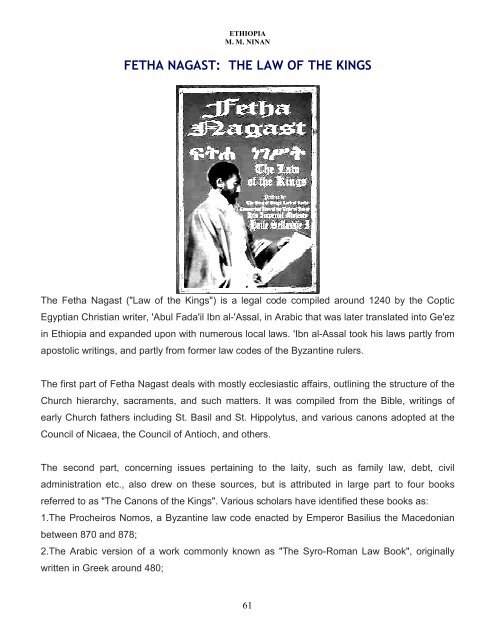Create successful ePaper yourself
Turn your PDF publications into a flip-book with our unique Google optimized e-Paper software.
ETHIOPIA<br />
M. M. NINAN<br />
FETHA NAGAST: THE LAW OF THE KINGS<br />
The Fetha Nagast ("Law of the Kings") is a legal code compiled around 1240 by the Coptic<br />
Egyptian Christian writer, 'Abul Fada'il Ibn al-'Assal, in Arabic that was later translated into Ge'ez<br />
in Ethiopia and expanded upon with numerous local laws. 'Ibn al-Assal took his laws partly from<br />
apostolic writings, and partly from former law codes of the Byzantine rulers.<br />
The first part of Fetha Nagast deals with mostly ecclesiastic affairs, outlining the structure of the<br />
Church hierarchy, sacraments, and such matters. It was compiled from the Bible, writings of<br />
early Church fathers including St. Basil and St. Hippolytus, and various canons adopted at the<br />
Council of Nicaea, the Council of Antioch, and others.<br />
The second part, concerning issues pertaining to the laity, such as family law, debt, civil<br />
administration etc., also drew on these sources, but is attributed in large part to four books<br />
referred to as "The Canons of the Kings". Various scholars have identified these books as:<br />
1.The Procheiros Nomos, a Byzantine law code enacted by Emperor Basilius the Macedonian<br />
between 870 and 878;<br />
2.The Arabic version of a work commonly known as "The Syro-Roman Law Book", originally<br />
written in Greek around 480;<br />
61


















